Vision Tests
This page contains two downloadable and printable vision tests, and one test to be done on the computer monitor without printing.
Please Note:
These sections are not intended to replace the professional examination and diagnosis by a physician, and they are presented here purely for informational purposes. All possible diagnoses and treatment options are not covered, and the information discussed should not be taken as a recommendation to self-diagnose and self-treat a condition. A misdiagnosed or improperly treated eye condition can result in a permanent loss of vision, or a permanent loss of function of the eye or visual system. In the case of any eye problem, seek medical attention promptly. This can include emergency room treatment, as well as treatment by a medical physician or eyecare provider.Distance Vision Test - Printable
This is a test of the distance visual acuity using the "E Game". This test can be performed by adults as well as children. Below are instructions on how to print and administer the test. While this vision test is felt to be accurate, it does not substitute for vision tests given by a health care professional or eye care professional. Due to differences in monitor size and resolution, this test is not accurate when read from a computer monitor or television. Also, due to differences in printer resolution and setup, there can be variations in the appearance of the test. Included is a calibration bar that can be measured to determine that the letters are of the correct size.
When printing, the following settings should be used in the printer setup, as available:
Before the test is administered, check that the length of the calibration line is 100 millimeters (3 15/16 inches). If the distance is 100 mm, then the 10 foot testing distance is accurate. If it is different than 100 mm, the testing distance will have to be altered in order to give the proper visual acuity result. See below to adjust the test distance.
The test should be given in good light. The printed eye chart should be placed upright on a wall, and the testing distance should be measured exactly (10 feet, or as determined below). The person taking the test should stand at the testing distance. The person taking the test should cover one eye at a time. The lowest line that can be read correctly is the visual acuity for that eye. Note that since only the 20/20, 20/40, 20/100, and 20/200 lines are represented, a person's visual acuity could fall between the levels represented. (For example, if the 20/40 line could be read, but not the 20/20 line, the vision is at least 20/40, but could also be 20/30 or 20/25.)
When testing children, make sure that the covered eye is truly covered. Since peeking through fingers is possible, it is more reliable to place an opaque object over the eye that is not being tested. For variation, the chart can be turned upside-down, or sideways.
Adjusting the Test Distance if the Calibration Line is not 100 millimeters:
The distance that one should stand in inches from the test chart can be calculated by multiplying the length of the calibration line in millimeters by 1.2:
Test Distance in Inches = Calibration Line Length in Millimeters X 1.2
Thus, if the calibration line is 100 mm, then the person taking the test should stand 100 mm X 1.2 = 120 inches, or 10 feet, from the chart.
Amsler Grid - printable
The Amsler Grid is useful for monitoring the function of the macula, or the central area of vision. Certain disorders, such as macular degeneration, can lead to distortion of the retina due to hemorrhage or swelling. This leads to distortion of the visual image perceived by that area of the retina (much like camera film that is wrinkled in the camera will give a distorted photograph). In many cases, a person can monitor their vision with an Amsler Grid to check for distortion, blind spots, or changes in previously existing abnormalities. Some conditions that are monitored with an Amsler Grid include:
When printing, the following settings should be used in the printer setup, as available:
The grid should be approximately 4 by 4 inches after printing.
To use the grid, place it in a visible location with good lighting, such as on the refrigerator. With one's normal glasses correction for reading (reading glasses or bifocals if needed), view the grid, one eye at a time, at normal reading distance. Look at the central dot. As the dot is visualized, and without moving the eye, note whether or not there is any distortion or breaks in the lines of the grid. Also note if the dot, part of the dot, or if any of the lines disappear. Blurred or double images might not necessarily be abnormal. The use of progressive, lineless bifocals may introduce some distortion in the grid. After one eye is checked, check the other. The whole process may take only 10 seconds. Check the grid daily, or as often as recommended by the treating physician.
If a change is noted on the Amsler Grid, such as new distortion or blind spots, notify the treating ophthalmologist immediately (the same day).
Color Vision Test
Approximately 8% of males and less than 1% of females are born with an inherited type of color blindness, known as "red - green" color blindness. In this disorder, there may be confusion in distinguishing certain hues from one another. For example, certain reds, browns, olives and golds may be confused. However, pure red would be easily distinguished from pure green, in this particular type of color blindness.
There are many varieties and degrees of color blindness, and this color vision test only pertains to the most common type, the inherited red - green type of color blindness. This test may not be accurate due to the wide variety in the ways colors are displayed on different monitors and with different internet browsers. Certainly, it would be doubtful that a printer would display the colors correctly, so it is not recommended to print the test to take it. An individual's eye care provider can test color vision most accurately.
When taking this color vision test, look for a number or shape in each figure. Observe the computer monitor at a normal distance and with glasses, if necessary. The eyes can be tested separately, or together.
Take the Test
Note: This tests consists of 8 images containing shapes or numbers. Some images may be easier to see than others, but try to only spend 3 seconds viewing the image. You can record your answers for easy scoring after you compete the test.
Read this important information before proceeding further:
These sections are not intended to replace the professional examination and diagnosis by a physician or eye care provider, and they are presented here purely for informational purposes. The availability of these vision tests should not be taken as a recommendation to self-diagnose or self-treat a condition. Due to the fact there are so many different monitor screens displaying different colors, the accuracy of this "on-line" version of "Color Vision Testing Made Easy" is limited. This webpage is for "screening" purposes only, not a "diagnosis". For a diagnosis, you should see your vision care professional and be given the complete test using all 14 plates of "Color Vision Testing Made Easy" under controlled testing conditions and the proper lighting.- These sample color vision testing plates from "Color Vision Testing Made Easy" and "Quick Six Color Vision Test" were developed & designed by Terrace L. Waggoner, O.D.
- He is the copyright owner of these plates, and their use here is by his permission.
- For more information, please visit http://colorvisiontesting.com/
Question #1
Try and find a circle, star, and/or square in the diagram within 3 seconds:
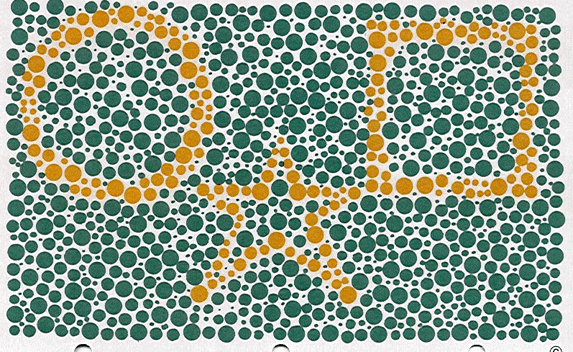
Question #2
Try and find a circle, star, and/or square in the diagram within 3 seconds:
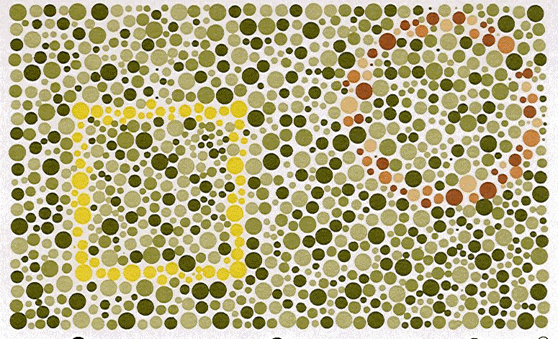
Question #3
Try and find a circle, star, and/or square in the diagram within 3 seconds:
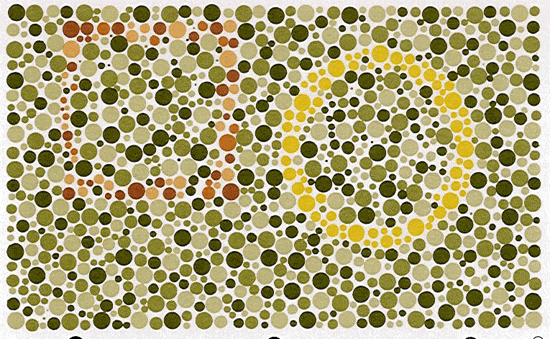
Question #4
Try and find a dog, boat, balloon, or car in the diagram within 3 seconds:
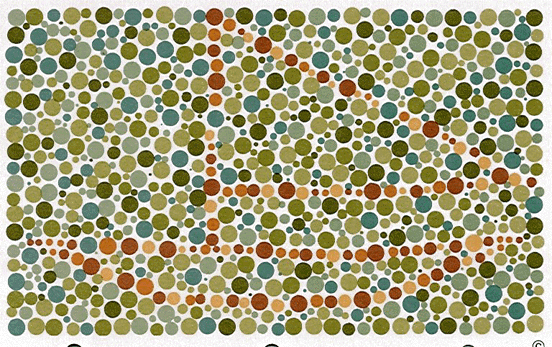
Question #5
You have 3 seconds to identify the number in the diagram:
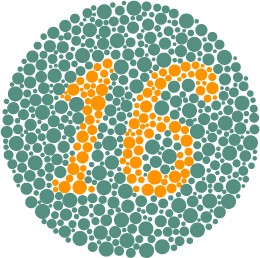
Question #6
You have 3 seconds to identify the number in the diagram:
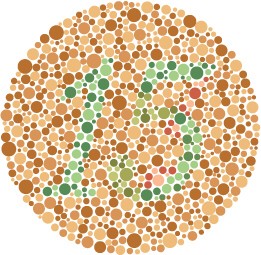
Question #7
You have 3 seconds to identify the number in the diagram:
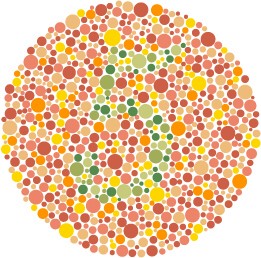
Question #8
You have 3 seconds to identify the number in the diagram:
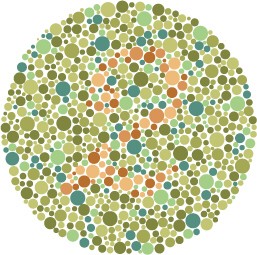
Click Here for the Color Vision Test Answers




